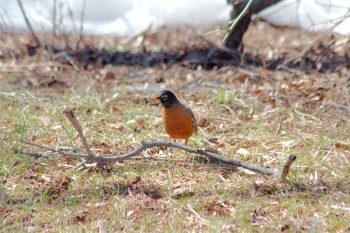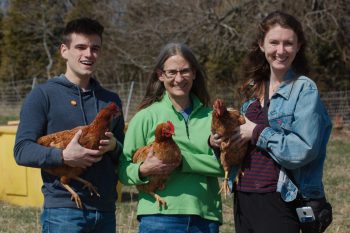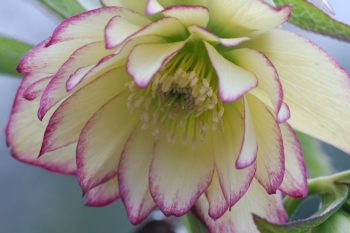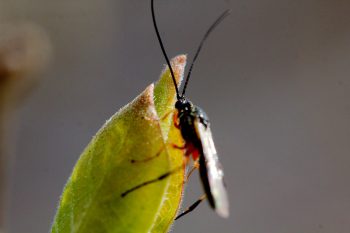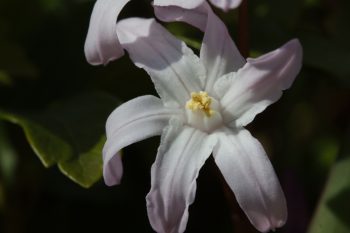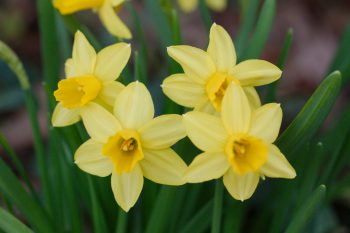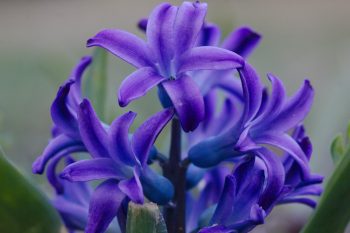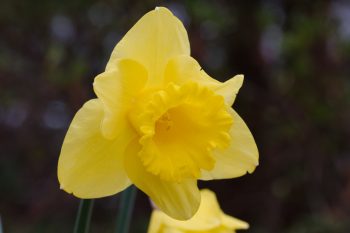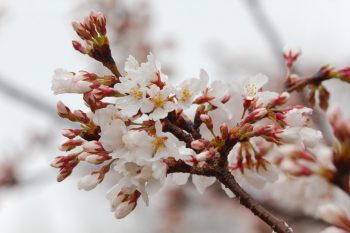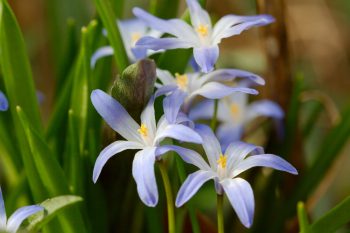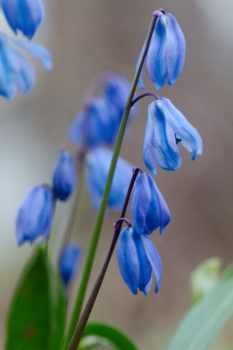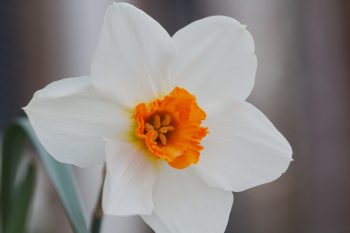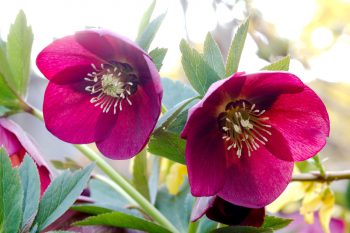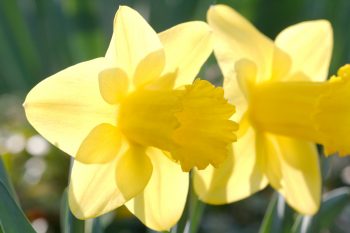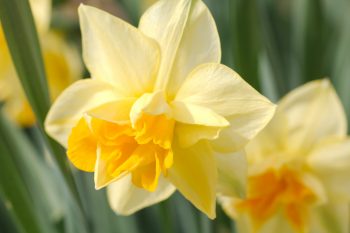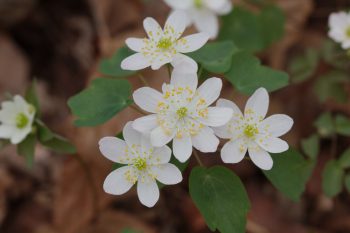With a specific name like Turdus migratorius, you might thing the American robin is only here part of the year. After all, migratorius implies it migrates. Well, it does. Nevertheless, for the overwhelming part of the 48 contiguous states, the robin is a year-round fixture. Their summer breeding grounds extend from the southern states (and include the mountains of central Mexico) to cover all but the most arctic portions of Canada. In the winter they move south, with their northern limit right around the U.S.-Canadian border. So, if you live in Canada, their arrival is a sure sign of spring. The birds we see in the summer may not be the birds we see in the winter but frankly, they all look pretty much alike. We often see them eating berries on the holly in our front yard. This time of year, as it begins to warm up, they are active pulling up worms, as this one was doing before being so rudely interrupted by me.
Tagged With: Spring
American Robin (Turdus migratorius)
Nobody Here But Us Chickens
As I mentioned yesterday, Dorothy is home for spring break and brought four friends with her. Today we drove out to our friends farm in the outskirts of Poolesville. The chicken’s are not really a featured attraction and visitors are not supposed to wander out into the field with the animals. One advantage of being friends with the owners, however, is a little more latitude when it comes to where we are allowed. The kids (and I’m counting Cathy among them) enjoyed catching chickens and putting them back inside the enclosure. Here are John, Cathy, and Grace, each with a chicken.
Scilla mischtschenkoana
This is one of my favorite little, spring bulbs. I don’t think I could ever have too many Scilla and Chionodoxa bulbs in my yard. I currently have two species of each. This is the less common of the two Scilla, with the other being the much bluer Scilla siberica. The flowers of the Chionodoxa species are similar but are more upward facing. One of those is pink and the other a really beautiful blue. These are mostly white with just a small amount of blue down the middle of each petal.
Double Lenten Rose
This is the first real flower I’ve had on this Lenten Rose. It sort of bloomed last year but the flower was somewhat deformed and was missing more than half its petals. This year it’s got a serious flower and I think this may become one of my favorites. Off hand I don’t remember the variety name but I should be able to track it down somewhere. As you can see, it’s a double flowered variety and the pink edges to the petals is quite nice. This is under the trees right out back and when it gets a bit larger it will be very obvious this time of year.
Update: I looked up the variety and it’s Helleborus ‘Rose Quartz’ (although the order actually said Rose Quarts).
Spring
I took my camera with me to a meeting across campus and then spent a little time taking pictures on the way back. The Amur honeysuckle (Lonicera maackii) is starting to leaf out and in spite of the fact that it’s quite likely that we’ll have another freeze, it’s not at all bothered. It’s pretty well suited for cold and a light freeze or two isn’t going to do it any harm. This little insect, however, may be jumping the gun a bit. I don’t know, really. Perhaps it, too, has ways to deal with late freezes. I know some of my followers think it a bit funny that I try to identify all the plants and animals in my posts with their Latin names. You’ll be happy to know that I have no idea what sort of insect this is and I’m going to leave it at that.
Spring Snow
Snow in March isn’t that unusual here. Of course, if you listen to the radio this week you might not get that impression. I heard a report that breathlessly told us how long its been since we had a snow like this was forecast to be this late in the year. Well, that’s possible, I suppose. A couple problems. Most importantly, the actual snowfall didn’t live up to the hype. We got maybe four inches of very wet snow. I remember a snowfall on March 18 not that long ago that was two or three times worse. But it’s March 21, which is, as I’m sure you can figure out, later in the year than March 18. Not by a lot, though. Anyway, as usual, much ado about not much. Quite pretty, actually.
Star Magnolia Bud
The house Cathy grew up in has two star magnolias (Magnolia stellata) in the front yard. They bloom early and their petals are quite tender so it’s actually more common for them to be frost damaged than not. The snow and cold we had yesterday has done a little damage to the petals, as you can see on this bud. Nevertheless, if it doesn’t get cold again, this tree could put on a wonderful show in a week or so. But we aren’t out of the woods yet, in terms of frost and there’s plenty of time for these blooms to be wiped out. They’re lovely as they are, of course, but on the rare occasion the trees bloom without any petal burn, they are quite spectacular.
Chionodoxa forbesii ‘Pink Giant’
The Chionodoxa forbesii ‘Pink Giant’ has begun to bloom in the shady northern corner of our yard. It’s more shady later in the year, when the oak that is over it has leaves. This time of year it gets a fair amount of sun from mid morning through early afternoon. This is a pretty little plant, barely showing itself over the Pachysandra terminalis (Japanese pachysandra). There are some others coming up, as well. And our early, small daffodils are in bloom. In spite of the snow we had last week, it’s really starting to look, if not to feel, like spring.
Daffodil ‘Tete-A-Tete’
Since last week’s snow, it’s been relatively balmy and spring-like. The daffodils were already coming up when the snow came, with a few already in bloom. Now, a little more than a week later, they are bursting into bloom all over. Shortly we’ll have great drifts of yellow where the highway department has planted them alongside roadways. Front yards will be sporting the beautiful yellow flowers, dancing in the breeze (a la William Wordsworth). This little one is the earliest in our yard, to be followed shortly by the much larger and dare I say quintessential ‘Marieke’, along our front walk.
Purple Hyacinths
Depending on which computer I use to look at this picture, these hyacinth flowers sometimes look a lot bluer than they are in real life. Other monitors show them the way they looked. If they look blue to you, take my word for it that they are a very strong, electric purple with just a bit of blue on near the base of the flowers. Nevertheless, they look quite nice as blue flowers, too. I’m not a huge fan of hyacinths, mostly because they are so strongly sweet smelling. I don’t mind them in the garden but I don’t want them brought into the house. Every year I take at least one set of pictures of them, though, and think of our friend who loves them. Here’s one for you, Julia.
Star Magnolia (Magnolia stellata)
Eight days ago (see Friday, March 23, 2018) I posted a picture of a star magnolia (Magnolia stellata) bud. I commented that the petals were slightly burned by the cold but that in about a week or so the flowers should be open and if there is not another serious frost, they would look wonderful. Well, we haven’t had another significant frost and the tree does, indeed, look great. You can see a little burning on the tip of a petal or two but overall, they don’t look at all bad. It was an absolutely beautiful Saturday with a rich, blue sky and the star magnolia petals, mostly white touched with pink, were lovely.
Daffodil ‘Arkle’
This isn’t a great picture but I’m pretty pleased with these daffodils. It’s a variety called ‘Arkle’ and I planted them in the fall of 2014, making this their fourth spring in our yard. They are still just getting established, with two or occasionally three blooms per bulb in contrast to those that have been here for ten years or so, which have five of six per bulb. Nevertheless, these are lovely, huge, bright yellow flowers on tall, strong stems and I’m happy to have them. These were bought in 2014 in two orders totaling 535 bulbs, the last, large order I’ve made.
Cherry Blossoms
The cherry trees around here often bloom over a fairly wide range of dates, with some finishing up before others even get started. There are trees in full bloom and others that are barely showing any buds. I was at the school today (Dorothy’s high school) and on the way out passed a few that were pretty close to being in full bloom. So, I stopped and took some pictures. It rained off and on today, so the flowers were wet and the sky behind the tree was white, rather than any sort of contrasting blue. Still, the pale pink of the flowers is quite nice. Interestingly, the tree next to this has noticeably darker pink flowers. Close up, it isn’t so obvious but when looking at the trees next to each other, it’s easy to see.
Chionodoxa forbesii
I’ve planted a fair amount of this around the yard but I’m not sure I could ever have too much of it. Chionodoxa forbesii, commonly called glory of the snow, is a beautiful, little early spring bulb. Although the daffodils have started blooming and they overlap with this, these are going to be done well before the daffodils. The Latin genus, Chionodoxa, comes from the Greek words chion meaning snow and doxa meaning glory. This reflects their very early flowering, often when snow is still on the ground. The specific epithet, forbesii, honors James Forbes (1773-1861), the British botanist who was employed as the gardener for the Duke of Bedford at Woburn Abbey.
Scilla siberica
I love this beautiful, little bulb. Along with the similar (and related) Chionodoxa (glory of the snow) species, it’s an early, generally blue-flowered bulb. It’s also a very welcome sign of spring. Not as early as the Eranthis or the Galanthus (snow drops, both of which start blooming here in February, it’s still a great thing to see coming up, especially when you have a late snow, as we did this year. Scilla siberica, commonly called Siberian squill, is native to Southern Russia and is hardy as far north as USDA Zone 2. Like Chionodoxa, it has small, mostly blue flowers but they are generally much more thoroughly blue. The other obvious difference is that they open facing downward while Chionodoxa flowers generally face up. If you don’t have any in your yard, I highly recommend them. Buy a bunch this fall and get them in the ground. You’ll be enjoying them for years to come.
Daffodil
This is among the first things I planted when we moved here eleven years ago. These bulbs and a few others were given to me by a good friend as payment for taking some family photos for her. They’ve done very well between our front walk and the house and always give good value. Daffodils have some exceptional qualities. For one thing, they are very reliable, coming up every spring without so much as a peep of complaint. A late freeze or snow fall doesn’t bother them, the deer and rabbits leave them alone, and every year the clumps get larger, eventually growing together into drifts that brighten a rainy spring day. What’s not to like?
Helleborus ‘Red Racer’
One of my favorite things is the color of flower petals (or leaves, for that matter) with the sun shining through them. Even flowers that are beautiful on their own, like this Lenten rose (a Helleborus called ‘Red Racer’) are even more lovely lit from behind. At least that’s my opinion. I bought two of these from McClure & Zimmerman in the fall of 2014 but they no longer list it on their web site. I bought three others at the same time, two ‘Rose Quartz’ and one ‘Mango Magic’. We also have some white or nearly white varieties that we got from Brady when Brookside Gardens was replacing them with something else.
Narcissus ‘Arkle’
I hope you’re enjoying the spring flowers. I know some of my followers are in the south and your flowers started earlier and your daffodils may be finished by now. Others are to the north and the daffodils are only just getting started. The early dafs are done here but there are quite a few still in full bloom and one or two that are yet to come. This is a large, bright yellow daffodil called ‘Arkle’ that I planted in the fall of 2014. This being only their fourth year here, they are not as well established as the very similar ‘Marieke’ planted five years earlier. Still, they’re putting on quite a show.
Another Daffodil
The is the other of my unknown daffodil varieties. Like the one pictured three days ago, these bulbs were given to me by a friend and I didn’t make note of the variety name. They were planted in the fall of 2006 and are doing quite well. This particular variety, unfortunately, has a bad habit of not always opening. Also, when they do, as they mostly did this year, if it rains the flowers are too heavy for the stalks and they all droop. But when they are open and upright, they are quite nice. I was happy we got to enjoy them at their best this year.
Thalictrum thalictroides (Rue Anemone)
After church Cathy said I should go into the woods because there were some wildflowers that I might like to photograph. There were, indeed. They are rue anemone (Thalictrum thalictroides), a native to eastern North America and a pretty little spring flower. As you might guess from the common name, the plant is quite similar to the meadow rue (in leaf form) and to the anemone (in flower form). It’s a pretty little woodland flower and would be a nice addition to a shade garden.

